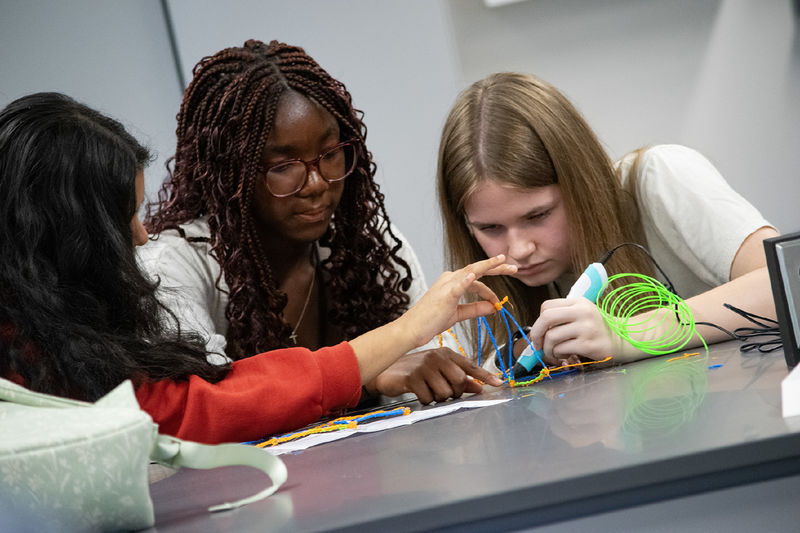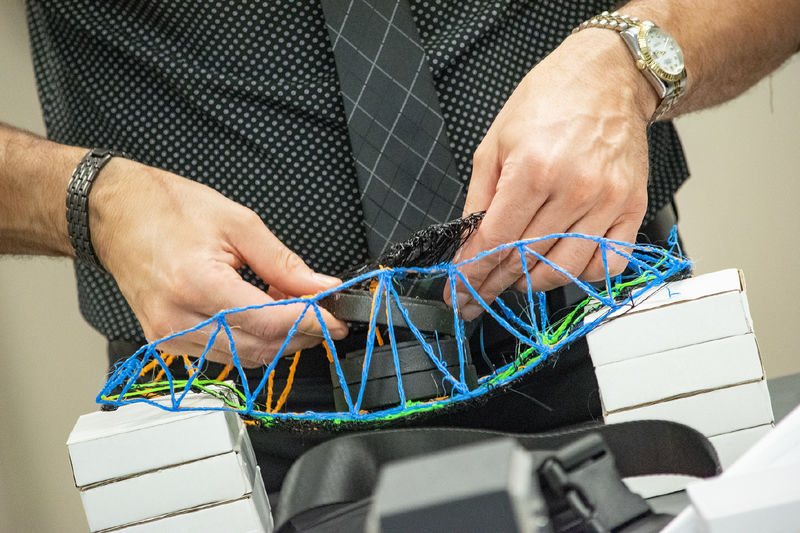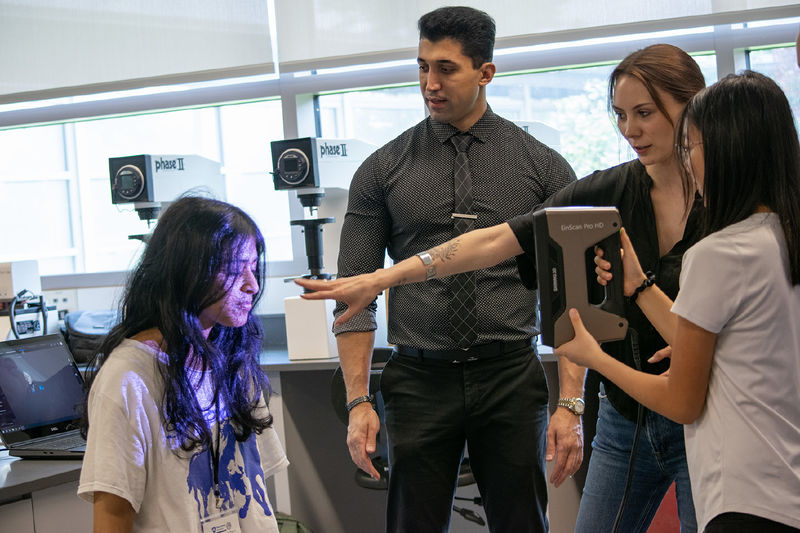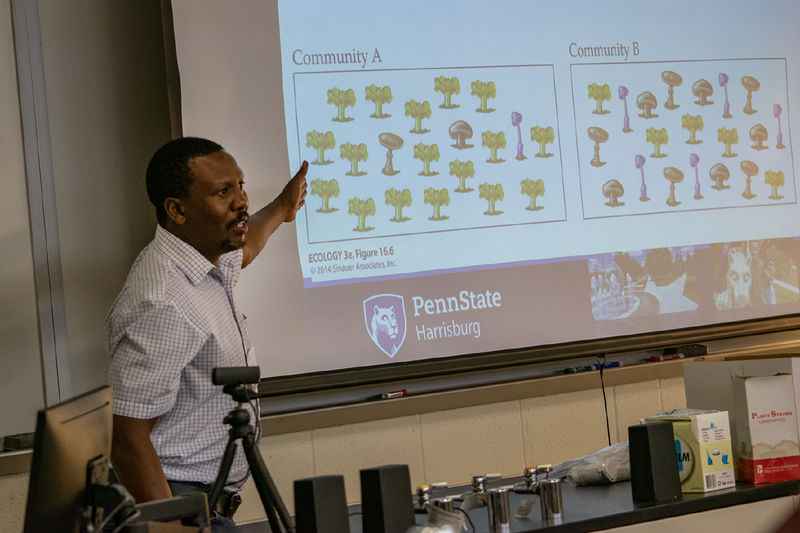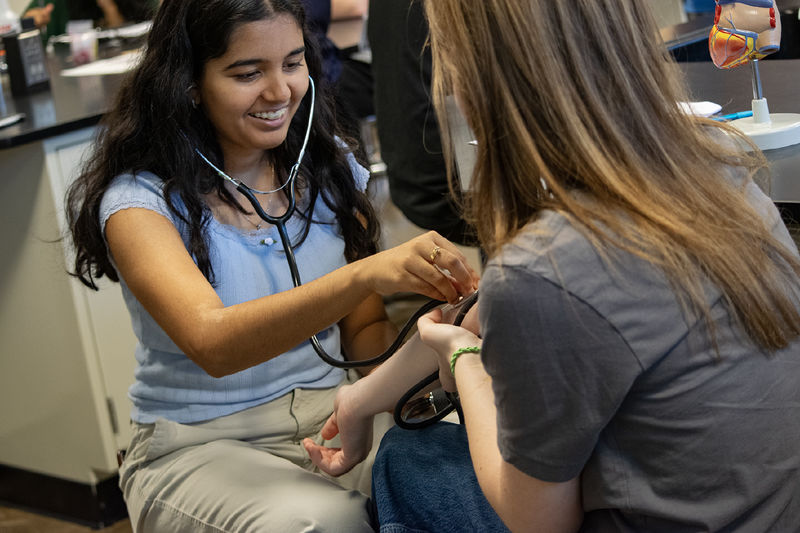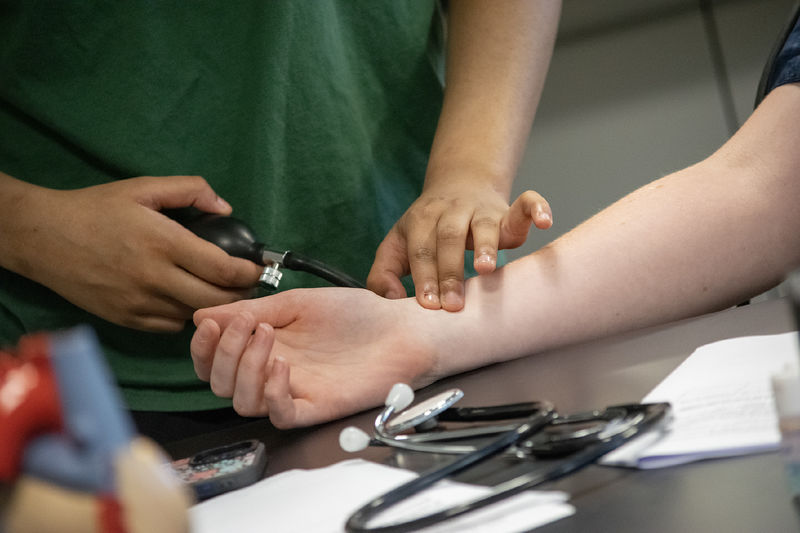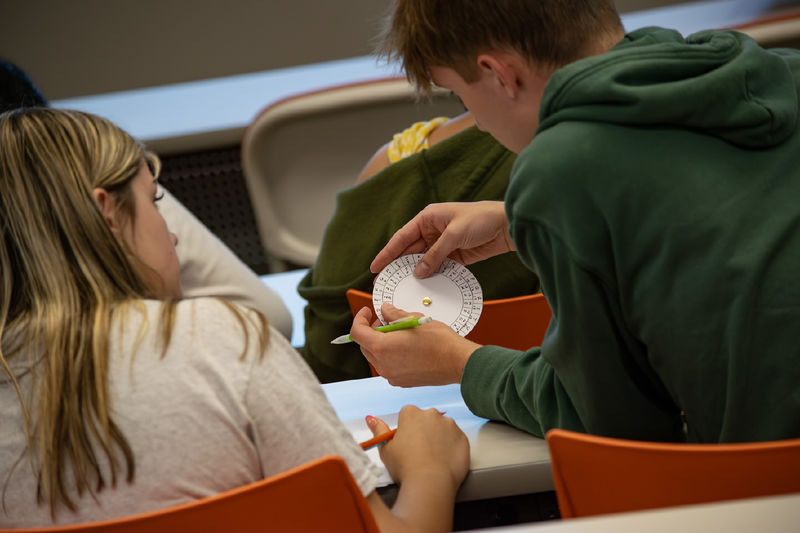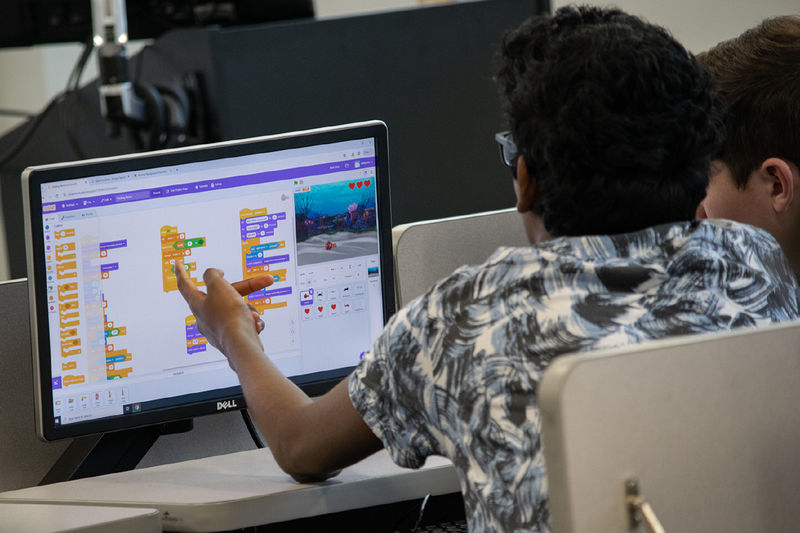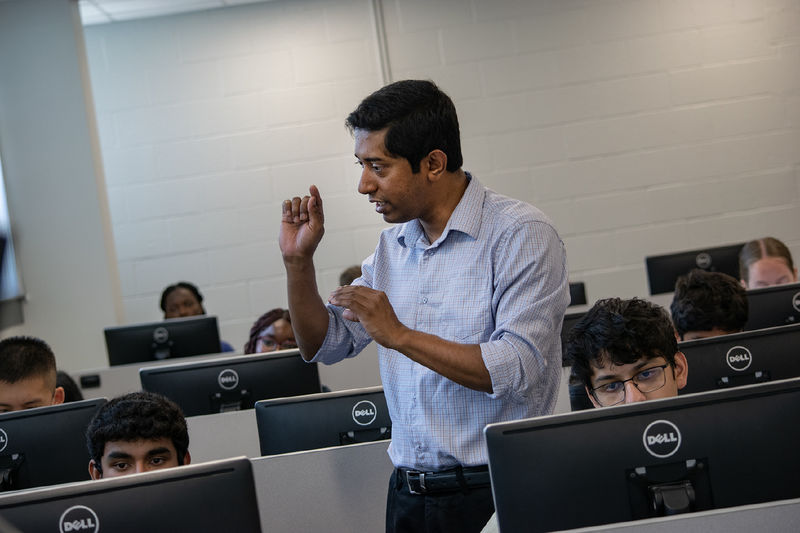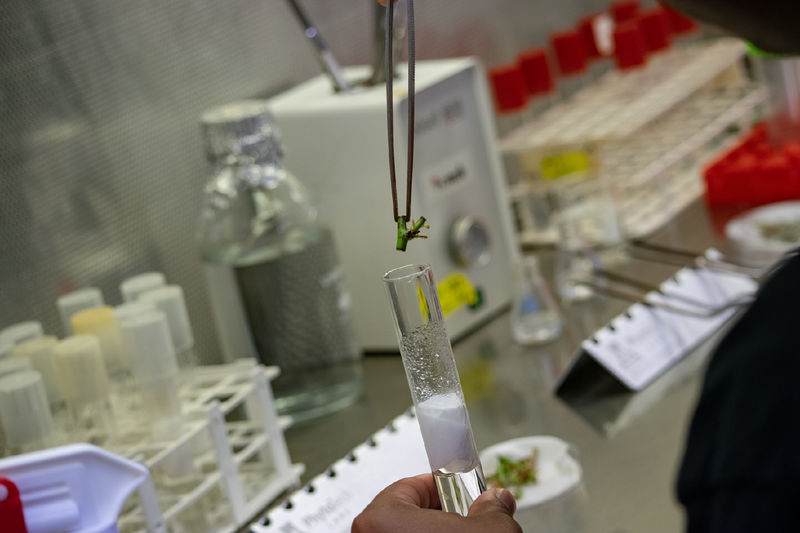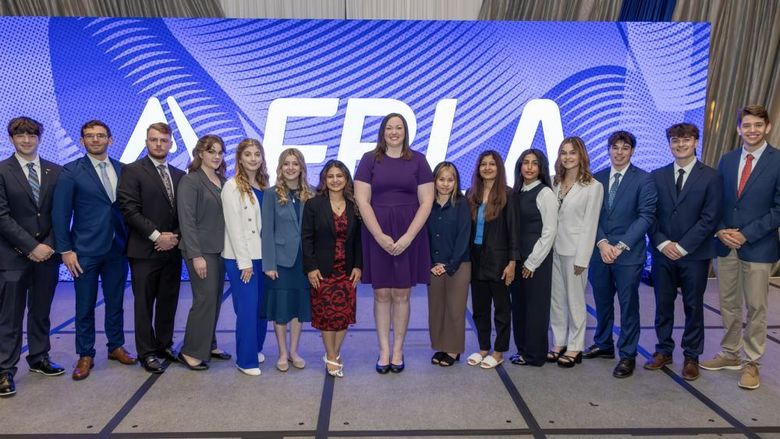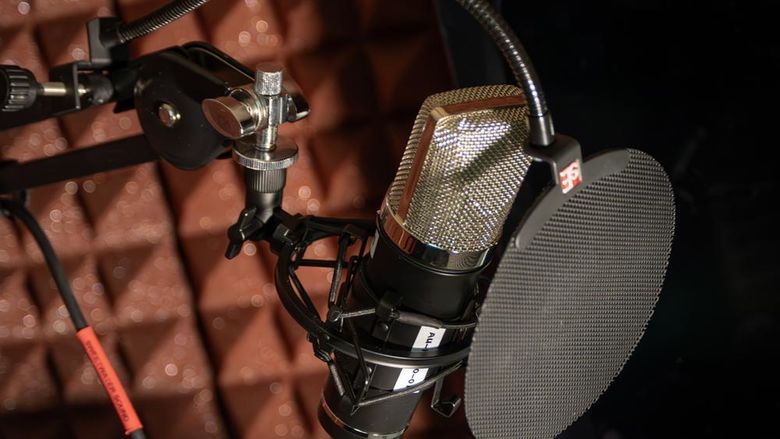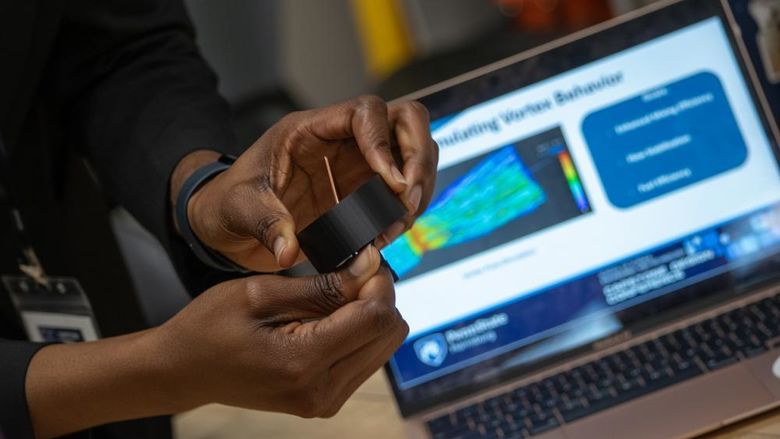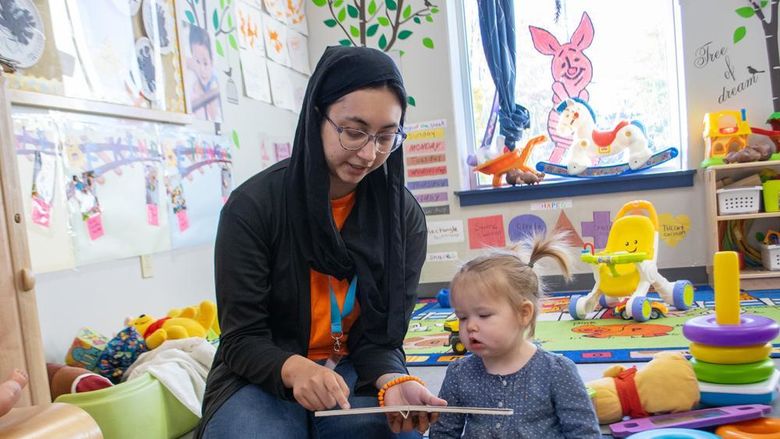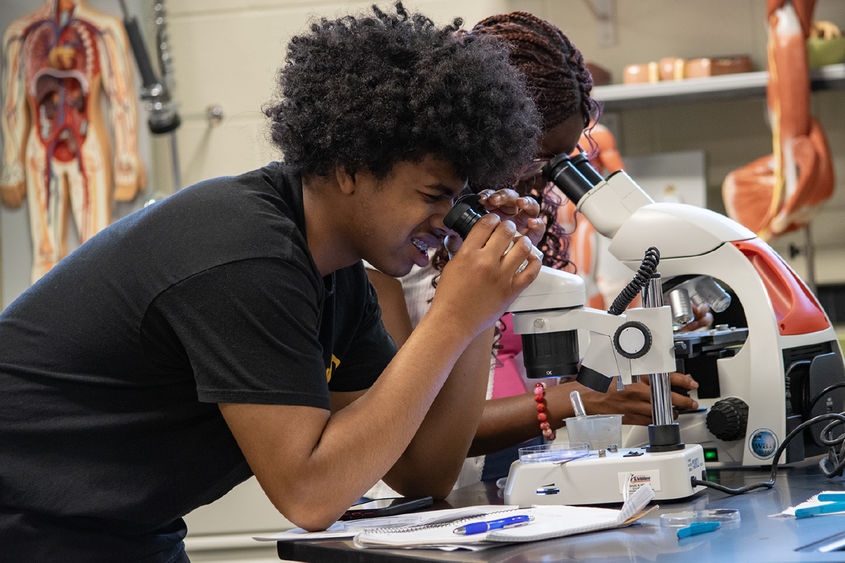
During the STEM-Summer Enrichment Program at Penn State Harrisburg, high school students explored various STEM fields through hands-on activities, such as identifying micro-invertebrates in soil and water samples.
MIDDLETOWN, Pa. -- Two dozen high school students took part in hands-on STEM (science, technology, engineering and math) experiences at Penn State Harrisburg this summer, through a two-week program aimed at helping them explore future career paths and gain college experience.
The students, entering 11th and 12th grades at 15 different schools, participated in the STEM-Summer Enrichment Program, which introduced them to eight different disciplines: biology, chemistry, mathematics, physics, computer science, civil engineering, mechanical engineering and electrical engineering. The program is in its seventh year at Penn State Harrisburg.
“You must have hands-on experience in STEM fields to truly know if you enjoy them,” said Brittany Anderson, associate teaching professor of chemistry, who is director of the program, along with co-director Mitch Spear, research project manager. “While reading textbooks and watching videos can give you an idea of what the field has to offer, you don’t truly know if it’s for you until you actually do it. By giving the students the opportunity to perform biological and chemical testing, work on coding, solder circuit boards, and 3D print … they gain a better idea of what a career in a particular field will look like.”
The program drew a diverse group of students, some generally interested in STEM but not sure which field, as well as others already interested in a particular area.
“There are also some students that come in having no idea what they’re interested in, and this program gives them a better idea of what they like or don’t like,” Anderson said. “If we can help high school students gain a better idea of their career trajectory, it will hopefully make their college experience more efficient and effective.”
The program was purposefully smaller this summer than in previous years, Anderson said, to give students more one-on-one time with faculty, something representative of actual classes at Penn State Harrisburg.
Faculty members offered workshops, where they guided students through activities such as identifying micro-invertebrates in soil and water samples; 3D printing bridges and testing the weight they could hold; building a biomimetic light-seeking robot, and more.
The group also took field trips to the Penn State Hershey Clinical Simulation Center, where they participated in simulations such as how to intubate a patient and administer treatment for an allergic reaction, and to Three Mile Island, where they visited an ongoing construction project aimed at creating a more natural fish passage so certain species can better complete their migrations along the Susquehanna River.
On the final day of the program, students gave presentations on their experience. Several students marveled that they were allowed to use high-tech equipment in lab settings; many noted that the program helped confirm their areas of STEM interest, while also introducing them to areas to which they had not previously given much thought.
Ryan Swalin, who will be a senior at Central York High School in the fall, said he is interested in the field of biosystems engineering. The field is relatively small, so he appreciated the ability to network, collecting names and emails for future contacts.
“To be able to reach out to professors and be in an environment where I can have one-on-one conversations was really, really useful,” he said.
Swalin said the biology workshop on plant tissue culture ties into what he hopes to do one day.
“So that was really great,” he said, but he also found himself interested in the civil and electrical engineering sessions. “I realized that they could be integrated into what I want to do and also they were just fun to do.”
The program also included a college preparation presentation where students learn about the application process and more.
Anderson said she always hopes the students learn, grow and have fun.
“We also hope that in exposing them to various engineering and science disciplines they begin to build on their learned experiences,” she said. “Our goal is for them to apply the knowledge gained from this program and their school classes to motivate them in exploring additional education and STEM related career pathways.”
STEM-SEP is partially supported by grants from the Cleveland-Cliffs Foundation and Eurofins Scientific.
